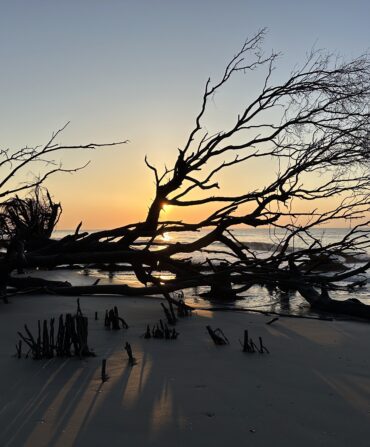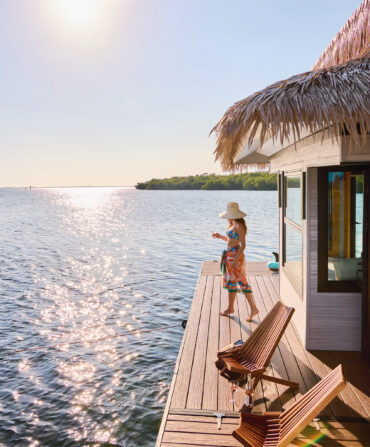City Portrait
The Southern Flair of Washington, D.C.
Washington’s Southern ties may be fading, but it hasn’t entirely lost its drawl, especially when it comes to a few recent West Wing residents
I came to Washington, D.C., the autumn Jimmy Carter was elected president and lived in the city through the protracted reign of George W. Bush, two distinct brackets indicating the South’s continuing influence. But how Southern were they? Carter’s religion was somewhat familiar to me, being an Episcopalian raised in Memphis, then home of the world’s largest Baptist church, but he seemed remarkably righteous even for a Baptist, and resolutely anti-Washington—those cardigans, and insisting upon carrying his own bag off Air Force One!
When his chief of staff spat Kahlúa onto a girl’s bodice in a Georgetown bar, I thought, “That’s more like it.” But Carter disappointed a city that expects hauteur among its entitled. White House staffers were rarely seen in Sans Souci, a fancy French restaurant in the sixties and seventies, with its banquette in the middle of the floor for maximum exposure.
Food other than peanuts didn’t seem to rank with Jimmy, who never knew the solace of fried chicken and collards at Thompson’s Lunch off U Street. He ran for reelection on the very un-Southern platform of “cold showers and root canals,” as one Washington commentator put it, and of course lost.
George W. Bush was demonstrably less Southern than Jimmy by heritage and by geography, but a lot better at playing the part. At least W had once been a devoted corn drinker and knew how to hold a shotgun. He gave himself up willingly to beef, carbs, and melted cheese, even though it was often in, well, nachos. For W, foot- and other balls were the reason weekends were invented. Also afternoons.
The accent was certainly from America’s Down Under, if also from Out There. Way Out There. His only lasting literary legacy may be the mismatch of singular verbs with plural objects (“There’s many people…”), now standard American usage. We all knew W wasn’t really Southern, of course, more the scion of a Connecticut Yankee in LBJ’s court whose avowed interest in pork rinds was embarrassing. Accepting entitlement was never a problem for father or son.
For many Washingtonians, the most memorable thing about W’s presence was the daily ejection of Dick Cheney from the vice president’s mansion on Massachusetts Avenue, in a shrieking caravan of identical black SUVs bristling with destructive capability, an over-the-top showing-off that was distinctly un-Southern. (Okay, Gore did it too, but more quietly, and slower.) But then D.C. as Cowtown East was as much a shuck as the Bush bunch’s being by extension good old boys.
It was President Kennedy, a Yankee, who said something about Washington being a blend of Northern hospitality and Southern efficiency. But Washington reflects its Southern exposure in a number of ways. Magnolias, crape myrtles, dogwoods, and cherry trees soften the contours, and the climate is closer to Richmond’s than Philadelphia’s due to an invisible weather line passing just to the north.
But the city overall has moved figuratively northward, according to a recent article in the Washington Post. “In the 150th anniversary year of the start of the Civil War, the region at the heart of the conflict has little left of its historic bond with Dixie.” Experts say that a linguistic line separating Southern from Northern accents today passes a mere forty-five miles north of Richmond, capital of the Confederacy.
Baltimore, close by to the north, was a prominent slave market in the 1830s, and the District of Columbia linked to that industry. Many old families known as Cave Dwellers, who were here for the duration and not linked to any one administration, are still a fixture in Washington, and many of their forebears were Confederate sympathizers. The ring of forts built around the city was constructed as much to intimidate them as the Rebs, but no one in D.C. worries about Cave Dwellers defecting anymore.
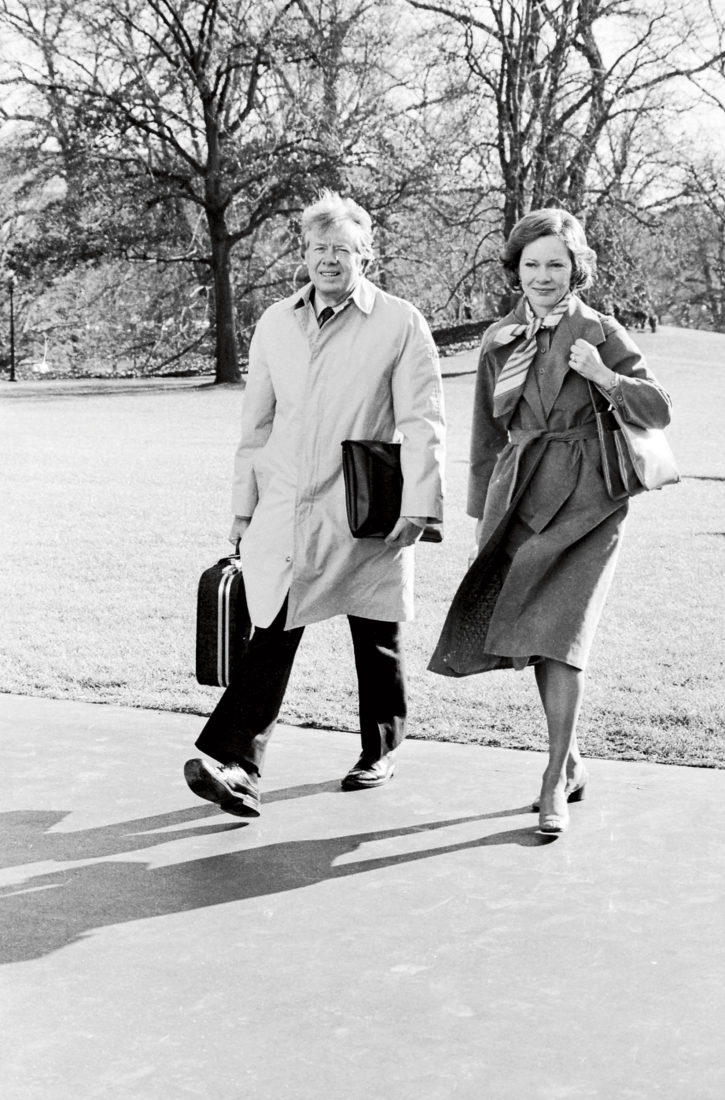
Photo: Bettman/CORBIS
President and Mrs. Carter return from a trip to Georgia in 1977.
“How long have you lived here?” is at least an approximation of Southern pride of place and endures in D.C. Local politics is all about the Democratic party, an echo of a vanished past in most of the South now, and so in an odd way makes Washington more traditionally Southern than, say, Little Rock.
Washington has acquired some selfconsciously Southern restaurants—Acadiana, Blue Ridge, Bubba’s BBQ (in nearby but thoroughly ’burban Falls Church)—and it retains the status of northernmost city where grits are often served with breakfast as a matter of course. But Washington has become so sophisticated that the south of France is as likely an influence on the cuisine beyond a few soulful dives like the Florida Avenue Grill. The deepest Southern roots in D.C. are still about food, and most often in the black community.
Efficiency has improved since Kennedy’s day, particularly if you’re interested in purchasing a tune-up for a BMW. Hospitality hasn’t necessarily if you’re not part of a recognizable influence center, Washington being as much about taking advantage of affiliation as talent. But if you can get beyond the opportunism, there are real people in your nation’s capital; the variety of their talents and generosity is awesome. An underground nexus of professional holdovers from Carter, Gore, and other Southern shape-shifters between government, moneymaking, and philanthropy keeps the embers glowing in Cleveland Park, Georgetown, and the inner burbs, helping in its way to blunt those Northern bristles.
Between Carter and Bush there was that other Southern president, Bill Clinton. But Clinton wasn’t readily recognizable as Southern, despite all the stories about burgers and Astroturf in the pickup bed. The dramatic lip biting, and the wonkiness, were learned traits, and Bill was just a tad too together to be properly Southern. He remained an enigma to his briefly adopted city—including to those who almost lost their wives to the presidential limo as it departed cocktail parties, a smiling Pres in the half-opened door.
When Clinton’s distant relatives came wandering out of the woods, a Southern presidential requisite (remember Billy Carter?), I thought things would improve. But this changeling was born-again of the Ivy League, not the Ozarks, and recognized early on the political and social advantages of professional Southernism, riding Dixie slick across exposed flanks on Capitol Hill and Wall Street.
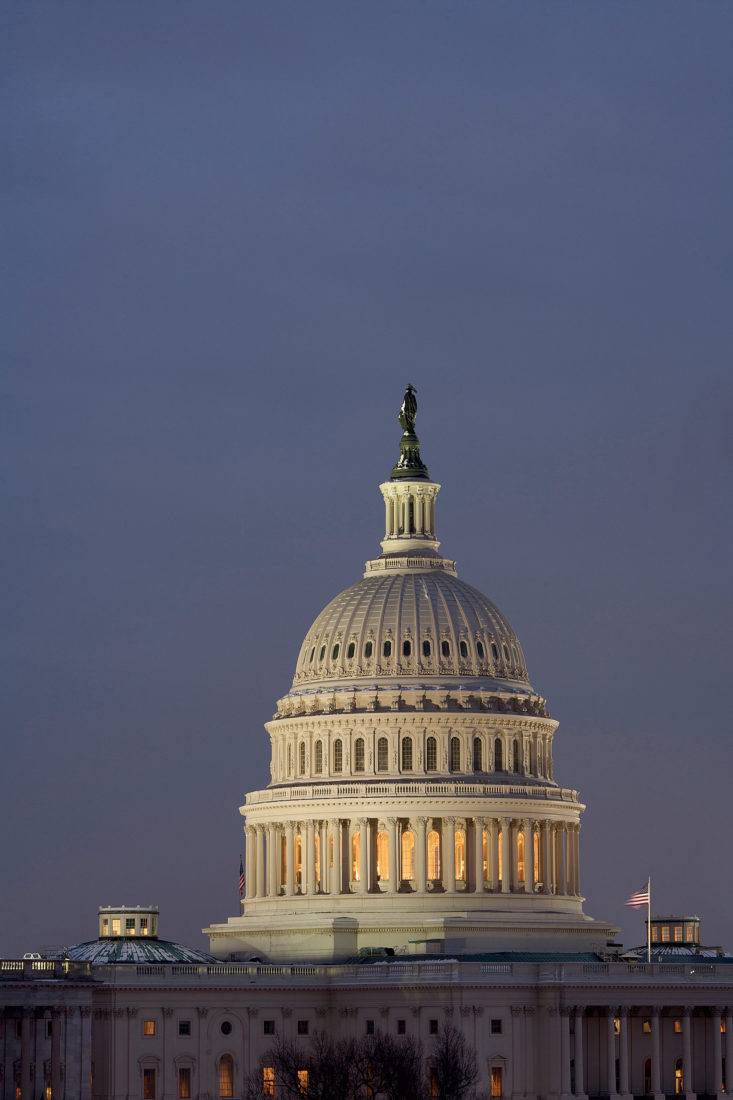
Photo: Michael Turek
The Capitol.
Clinton’s example brought out the worst in his fellow transplanted Southerners, even those who had adjusted to life in D.C. A journalist I know reverted to an accent as thick as Carolina vinegar and pulled pork. Late one night at a fancy party in Kalorama he turned to his wife and said, “Let’s piss on the fire and go home.”
Clinton’s downfall was hilarious despite the damage, and lacking in the tragedy expected of a protagonist from the ole CS of A. He also lacked the grace to lie well, and the true regret required to be believed and forgiven, something most any Southerner could have explained to him.
President Kennedy’s insights were really about the edgy nature of Washington, sitting as it does on the cusp of ultimate might and the hinterland. In what other city can you walk out of a meeting with some of the most powerful people in the world, cross a middling river or a highway, and encounter someone in camo trying to shoot a deer? Think of Washington as the eternal frontier, a twenty-first-century Jamestown, a St. Louis on the eve of western expansion, all about energy, ambition, and—too often—ideology, potentially enriching, and heartbreaking.
Which brings me back to Carter.
After he lost to Ronald Reagan but was still in the White House, Carter sat for the famous portrait photographer Yousuf Karsh, and a friend of mine, an Alabaman and Karsh’s agent, asked if I would like to come along for the shoot. Naturally I said yes.
It was December when we all gathered in the Oval Office. Carter had injured his shoulder skiing and was obviously in pain, but he stood beneath the bright lights, a gray presence on his way out, listening to the sound of hammers out on Pennsylvania Avenue where bleachers were going up for Reagan’s inaugural—the proverbial rising gallows. He made conversation without mentioning his troubles, personal or political; he didn’t balk at the tedium of portraiture. Then, smiling, he shook hands all round and went back to the nation’s business.
While the photographer packed up his gear, my friend and I took turns lounging in the president’s chair, behind his desk, unimaginable behavior post-9/11. But I couldn’t get Carter the man out of my mind. He was gracious, stricken, real. Southern.
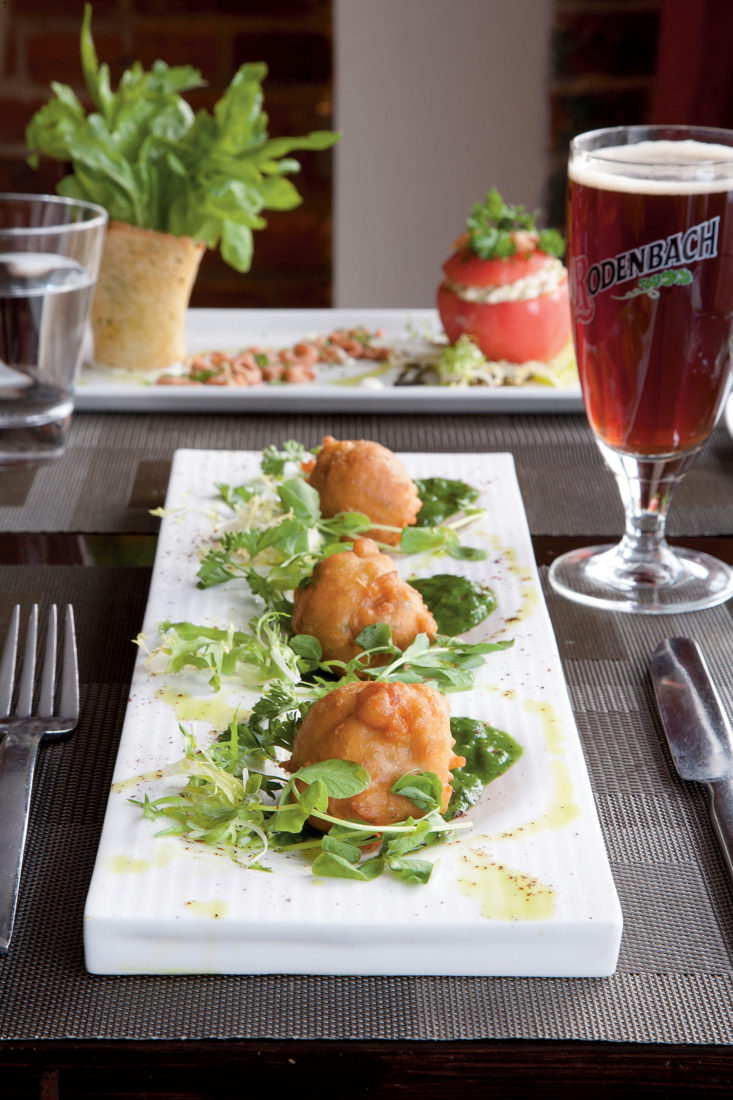
Photo: Michael Turek
A spread at Belga Café.
The Hot Spots
Eat
Belga Café
With handcrafted beers and loads of Belgian classics like mussels in a garlicky wine-and-cream sauce (served with perfectly crisp frites), this Capitol Hill spot attracts throngs of young Senate and House staffers. There’s a salad called tomat met grijze garnalen (tomatoes stuffed with baby shrimp) that must be tried. Plus entrées à la Belge like venison with a berry compote. Belgian-born chef Bart Vandaele has been plying his trade here since opening in 2004, and the place only seems to get better. 514 8th St. SE; belgacafe.com

Photo: Michael Turek
Breakfast at the Florida Avenue Grill.
Florida Avenue Grill
Those who say there’s no soul in D.C. should try a visit to the Florida Avenue Grill. A neighborhood stalwart since 1944, the diner is especially known for its breakfasts, from hotcakes and hash to biscuits and gravy. Or stop in for your pork-chop-and-collards fix. No frills, no fuss, no politics, just good Southern comfort food. 1100 Florida Ave. NW; floridaavenuegrill.com
Jaleo
At chef José Andrés’s groundbreaking D.C. tapas restaurant, the room swims in well-heeled Washingtonians, and with good reason: The theme here is small, simple, Spanish-inflected plates for all at a table to share. It’s collective. Talk happens. Try the jamón serrano with Manchego cheese. Or maybe the little bites of perfectly cooked octopus. This place formed the foundation of a local restaurant empire, and visiting it will—almost guaranteed— give you an understanding of why the city supports all that’s come after. 480 7th St. NW; jaleo.com
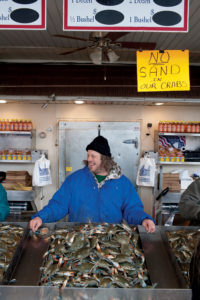
Photo: Michael Turek
The Maine Avenue Fish Market.
Maine Avenue Fish Market
Dating back some two hundred years, this open-air seafood market is where to eat when you can’t take Washington formality anymore. Look for the shiniest, freshest blue crabs. Request a dozen to be boiled, asking they be split between Jimmies (males) and Sooks (females). In minutes, you’ll be handed a brown-paper sack containing steamed crabs seasoned with Old Bay. They’ll even lend you a wooden mallet to help bust open your lunch. Maine Avenue near the I-395 bridge

Photo: Michael Turek
Chef Todd Woods at Nora.
Restaurant Nora
Among other distinctions, this Washington legend founded by chef Nora Pouillon was the first restaurant in the United States certified as organic. The palm-heart salad with pomegranate is amazing, as is the tenderloin tartare appetizer. Then you get down to real business: entrées such as a succulent roasted breast of duck from Amish providers, accompanied by butternut squash and a maple-flavored sauce that’s otherworldly. 2132 Florida Ave. NW; noras.com
Tabard Inn
Eventually all of Washington’s “power eaters” show up at the Tabard Inn, from Bill and Hillary to whatever celebs might be in town who don’t want to make a splash. Mornings mean fantastic breakfasts amid the linen tablecloths and wooden beams, and later in the day you can enjoy a libation in the carved-wood bar, or eat well in the restaurant (weather permitting, out in the garden). Fresh oysters on the half shell are almost always aboard, and the slate of entrées spans from perfect crab cakes to savory wild-boar ragout over pappardelle. 1739 N St. NW; tabardinn.com
Vidalia
Sometimes you need a taste of the deeper South in D.C., and Vidalia delivers with style. Though it’s a highbrow take on Southern food, chef Jeffrey Buben and his team understand precisely what they’re doing. They serve gorgeous shrimp and grits, soulful Frogmore stew, and a daily “blue plate” array of perfectly done vegetables you won’t find at a truck-stop steam table between Little Rock and Texarkana. 1900 M St. NW; vidaliadc.com

Drink
The Dubliner
Within sight of the Capitol building, this Irish bar is an institution on the Hill, serving dishes like shepherd’s pie and trademark “chicken Hibernian.” (It was also among the first places in the United States to serve Kilkenny beer.) Aside from seeing its share of politicos, the Dubliner is also where good Irishmen in Washington go when they need to “steady the ship a bit.” 4 F St.; dublinerdc.com
The Gibson
Modeled after a Prohibition-era speakeasy, this relative newcomer to D.C. nightlife specializes in strong drink. To get to it, you literally walk down a dark alley, and inside is a unique list of custom medicaments (try the Macchu Pisco or a bourbony Jackelope), plus soft leather covering all the seats. And no one—no one!—is allowed to stand at the bar to enjoy a drink. You sit when you have a cocktail in these parts, especially if you choose the off-the-menu absinthe frappe. 2009 14th St. NW; 202-232-2156
Quill
The bar sits four blocks from the White House, located in the recently renovated Jefferson Hotel—where former Clinton-administration adviser Dick Morris conducted what eventually became a very public extramarital affair. Short of being invited to the second floor of the White House residence, this is where you’ll often find the city’s most powerful folks talking quietly about events of the day. Even walking through the door, you understand discretion is a watchword here. 1200 16th St. NW; jeffersondc.com
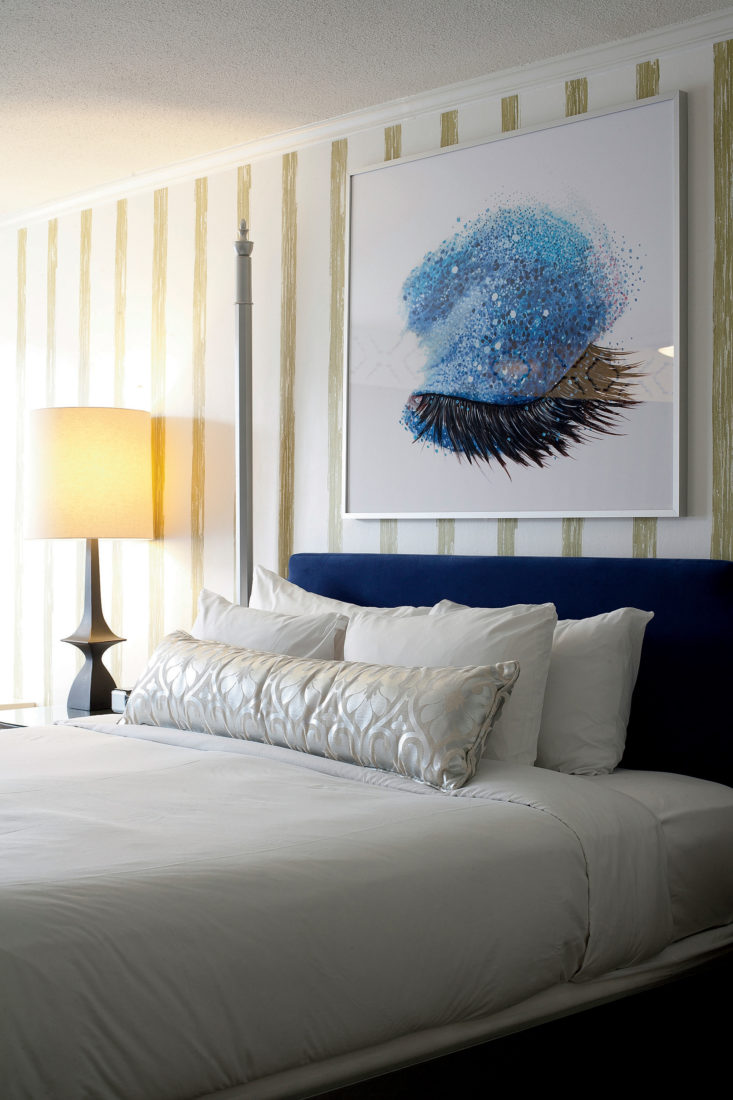
Photo: Michael Turek
Metro Style
The Topaz Hotel.
Sleep
The Hay-Adams
Built in 1927 and located across from the White House in Lafayette Square, this is Washington’s most coveted lodging. Renovated a few years ago, it’s a 145-room eminence with history everywhere. Accompanying its tasteful reserve—the hotel bar is fittingly named Off the Record—many of its rooms have balconies overlooking the National Mall and the Washington Monument. This is D.C. done right. 16th & H Sts. NW; hayadams.com
The Ritz-Carlton Georgetown
With a cool, industrial feel—wrapped in an old brick-clad factory building near the C&O Canal—this newer Georgetown hotel is off the beaten path just enough to feel homey. The rooms are spacious and quiet, and the lobby has a grand piano and stacks of art and photo books near its comfortable Modernist furniture. While there’s a more public Ritz-Carlton nearby (not to mention a very swanky Four Seasons), this place draws those wanting a less-frenetic Washington. 3100 South St. NW; ritzcarlton.com
Topaz Hotel
Set on a quiet street near Dupont Circle, the Topaz is one of D.C.’s top-drawer boutique hotels. The management goes out of its way for guests, from making sure there’s a good stereo or a strong Wi-Fi signal in each room to welcoming dogs, even in the elevators. They’ll sometimes even walk your dog for you if you’re hung up in a meeting. 1733 N St. NW; topazhotel.com
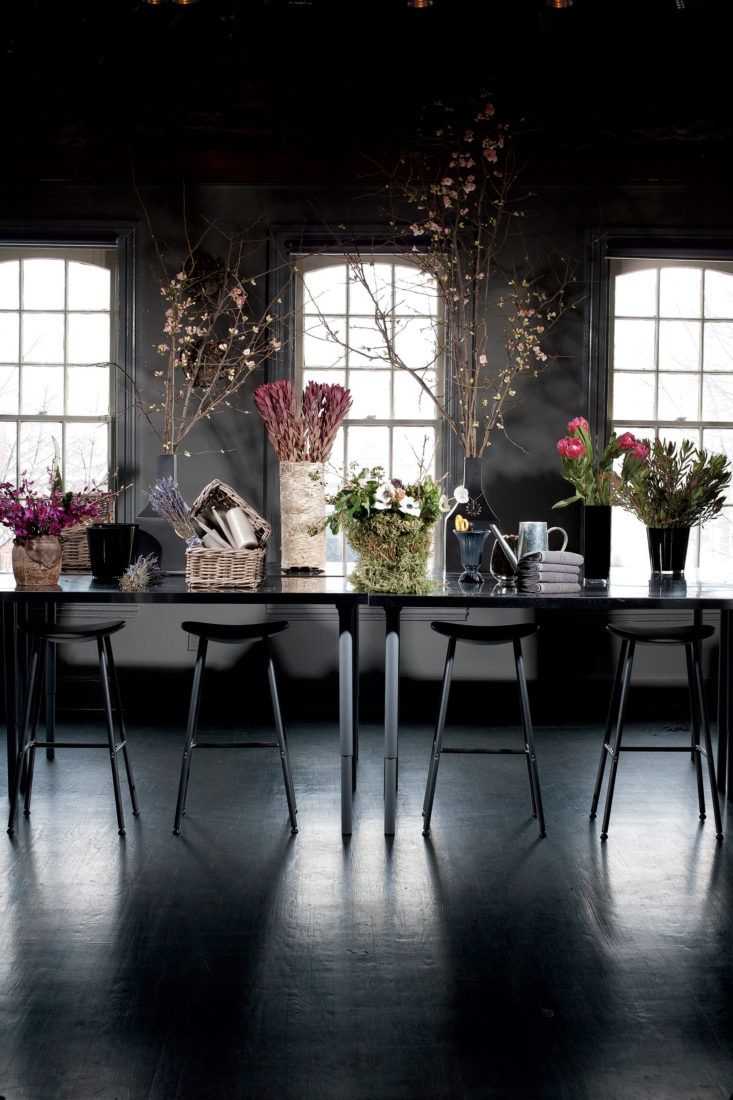
Shop
Bartleby’s Books
If you like books, especially antique and unusual ones, then Bartleby’s is a must-see. Just browsing can eat a whole day. It’s a world of leather bindings and odd titles, many tilting toward history. Ever read Charles Dickens’s 1845 work The Chimes: A Goblin Story of Some Bells That Rang an Old Year Out & a New Year In? Bartleby’s has a cloth-bound first edition. How about that 1890 regional classic Wild Jim: Capt. W. J. French, Texas Ranger; the Texas Cowboy & Saddle King? Yep, pardner, they got it. It’s like being teleported back two centuries. 1132 29th St. NW; bartlebysbooks.com
Boutique Fleurgreige
In a Georgetown loft, up a flight of stairs over an antiques shop on Wisconsin Avenue, this flower shop and floral-design school has become recognized as the place in town to call when you need a special thank-you after a successful meeting or dinner. Each arrangement is unique, and all are works of art. The flowers go out for delivery swaddled in tasteful tissue imported from France, at once beautiful and understated. 1653 Wisconsin Ave. NW (2nd floor); fleurgreige.com
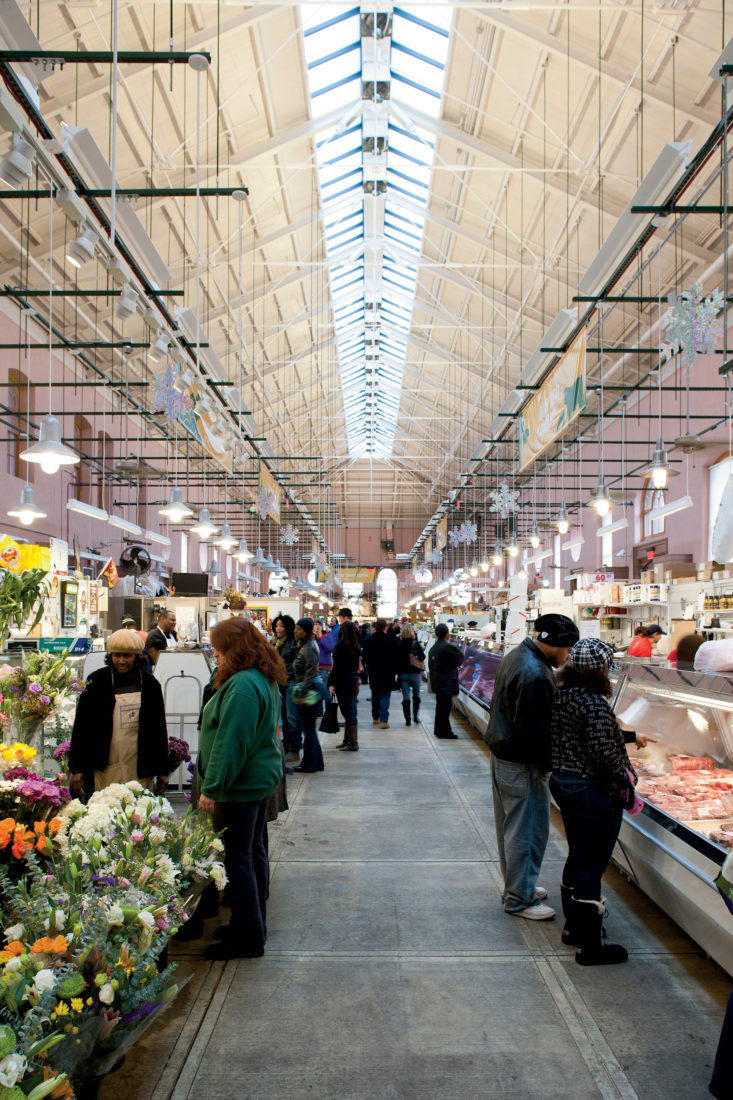
Eastern Market
Long before farmers’ markets were the hip thing, there was the Eastern Market, a Capitol Hill mainstay for fresh fruits and veggies, baked goods, smoked meats, and country butter. On weekends, the street shuts down and the market turns into an open-air bazaar, with an array of artists and vendors offering everything from alpaca shawls to Surinamese wood carvings. easternmarket-dc.org
Sumpter Priddy III, Inc.
D.C. is one of America’s lodestones for antiques. You’ll find dozens of reputable dealers across the city, especially in Georgetown along M Street and up Wisconsin. But for the best finds, cross the Potomac to Old Town Alexandria, on the river’s Virginia side, to Sumpter Priddy III. A Virginia native, he’s among America’s most sought-after antiques dealers, with a discerning eye and a broad list of contacts. Specializing in early American furniture, as well as both rural and urban artifacts and art, his store is a locus for serious collectors. 323 S. Washington St., Alexandria; sumpterpriddy.com
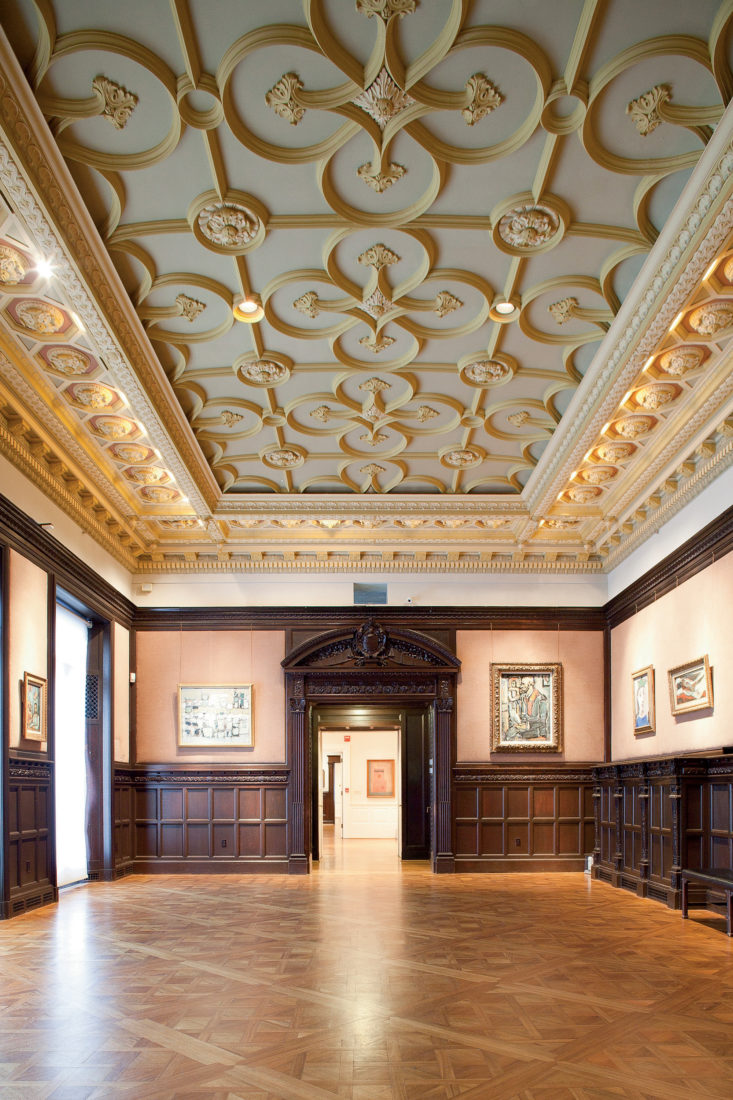
Photo: Michael Turek
The Phillips Collection.
See & Do
The Birchmere
Sure, there’s food and drink, and it has that funkiness that just seems necessary. But people come here for one good reason: the music. From Dave Matthews—who’s been known to turn up for an unpublicized jam session—to bluegrass legends the Seldom Scene to Mary Chapin Carpenter or Lyle Lovett, most every night at the Birchmere provides another few sets of memorable A-list music, and more than a little fun. 3701 Mt. Vernon Ave., Alexandria; birchmere.com
C&O Canal Towpath
Beginning at “the watergate”—a retractable dam next to the infamous office, hotel, and condo complex of the same name—this nearly two-hundred-year-old freight canal and towpath has a snaking gravel track alongside it that runs north for the next 184.5 miles, all the way to Cumberland, Maryland. Cyclists, horse people, runners, walkers, and nature lovers navigate it by bicycle, steed, and foot. In a very urban world, it’s a birdsong-filled sanctuary.
The Phillips Collection
So this guy, Duncan Phillips, collected some of the best canvases of the last two centuries—Renoir, Courbet, Braque, Klee, Rothko, Homer, Picasso, Whistler—and in 1921 decided to turn his house, just off Dupont Circle, into a museum. The rooms are gorgeous, the paintings are stunning, and the place regularly hosts evening jazz or classical concerts, followed by cocktail receptions. While the Smithsonian’s art museums are epic, this remains one of Washington’s hidden gems. 1600 21st St. NW; phillipscollection.org
The Riffles around Great Falls Park
Breaking up the Potomac River, about a half mile north of the outer Beltway in Virginia, the bass-y holes on either side of Mather Gorge are a secret hideout for a shocking number of Washington’s fly fishermen. During the spring, the water remains turbid and high, but later in the summer, these rocky runs become perfect for tossing popping bugs or Clouser minnows to largemouths and smallies. Though time (and billable hours) control much of D.C. life, this stretch of river and its sometimes remarkable fish put all that out of mind. 9200 Old Dominion Rd., McLean; nps.gov/grfa
The River Plantation
An Orvis-endorsed resort on the Chesapeake’s Eastern Shore of Maryland, about 45 miles outside Washington, this 1,200-acre refuge is where to enjoy upmarket sporting, with required doses of D.C. stylishness tossed in. There are skeet and sporting clays, not to mention fishing, sailing, boating, golf, and, in season, guided waterfowl hunts on surprisingly rich tracts of Chesapeake Bay marsh. In the Plantation’s fields are upland birds, including pheasant, a favored quarry of that famed lawyer shooter Dick Cheney. Rumor has it he’s been known to turn up at the River Plantation and blast ’em by the
dozens. The pheasant, that is. 511 Pintail Point Farm Lane, Queenstown; theriverplantation.com
The Textile Museum
Set away from the city’s bustle, in a quiet district of Northwest D.C., this under-the-radar museum is transfixing. From ancient and nubby Oriental carpets to the finest silks and wools, it shows the remarkable history of how people have woven things across the millennia. If you think you can’t be surprised by a museum anymore, stop in for a visit. It’s an education in how humans learned to protect themselves from the world—and do it beautifully. 2320 S St. NW; textilemuseum.org
The Locals
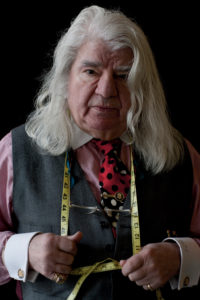 Georges de Paris
Georges de Paris
The Tailor
Born in southern France, Georges de Paris arrived in D.C. in 1959. “I was invited over by a French-American girl,” he says with a chuckle. “And I never left.” His flagship shop sits a mere two blocks from the White House, and while you don’t have to be a head of state to have him make you a suit, it helps. In fact, de Paris holds a unique legacy: He’s outfitted the last nine American presidents. “I’d have to say, Ronald Reagan was my favorite. He knew what he wanted. He knew what fabric he wanted. He was easy.” On this particular evening, the seventy-six-year-old is finishing up the hems and seams on a “perfectly fitted” suit for an “undisclosed” client. The suit, he says, must be ready for an occasion the following night called the State of the Union address. “We just had a talk,” de Paris says of this client. “And my advice was: Wear a white shirt with this color of suit. And also remember, because it is important: A yellow tie means hope, and a blue tie means peace and love.”
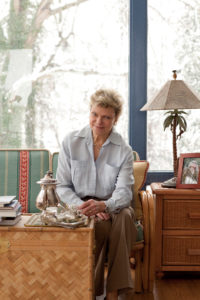 Cokie Roberts
Cokie Roberts
The Journalist
A reporter and analyst for both National Public Radio and ABC News, Cokie Roberts has had a front-row seat to Washington politics for most of her life. Born in New Orleans and the daughter of the late House majority leader Hale Boggs and Democratic Congresswoman Lindy Boggs, she’s lived in D.C. from the time she was a child. But it’s not just the ins and outs of politics that she finds compelling about the city. “It’s beautiful,” she says. “That’s something many Americans don’t understand. It’s one of the most beautiful cities on earth.” Roberts invokes the city’s diversity, the National Mall, and its platted grid of streets leading to traffic roundabouts, their interior circles full of floral plantings and marble statues. “Lady Bird [Johnson] made a huge difference,” she says. “She and Mary Lasker did these amazing plantings. The city is always in bloom.”
 Jeffrey Buben
Jeffrey Buben
The Chef
Jeffrey Buben’s culinary imprint on Washington, D.C. began some two decades ago, when, at his wife Sallie’s suggestion, he decided to open a Southern restaurant smack downtown. “I’m from Philadelphia, and my wife is from North Carolina,” the chef says. “So finally we settled on Washington. We were thinking, Hey, it’s in the middle.” They chose to call the place Vidalia. On the menu would be exquisite fish, and shrimp and grits, and pigs’ feet topped with a shirred egg. “And my wife, who at the time was new to the restaurant business, said, ‘We need a baked Vidalia onion on the menu.’ After our third day open, when everyone who came in asked for a baked onion, we put it on. It’s been there ever since.” For Buben, who has now gone on to open the upscale Bistro Bis on Capitol Hill, the ease with which he and his family can still escape the city is one of its major draws. “You have Chesapeake Bay right there. You have the mountains and the countryside nearby. But I also love that I can get right back to this big international capital in no time.”
 Lindsey Graham
Lindsey Graham
The Senator
You might think someone who spends a good part of his waking hours in the Capitol building would get a little jaded about his place of business. Not Senator Lindsey Graham (a Republican from South Carolina). Once in a while, the building itself simply knocks him back. “Especially at night, when I see the Capitol all lit up, I still get goose bumps,” he says. “When you lose that, you need to quit.” But for this Air Force officer and JAG lawyer, who served in Iraq as a reservist during his Congressional office in 2007 and during a 2009 Senate recess, what he loves most about Washington is what it represents. “The capital, and the Capitol building, is a living, breathing organism,” he says, all aimed at making the United States a better place. So what’s a perfect D.C. day for the senator? “A day you see some legislation moved forward for the people of South Carolina and the nation, and then you go to dinner with a few friends knowing that work got done. That’s as good as it gets.”



